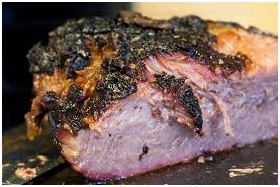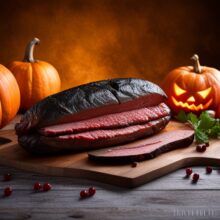How to Smoke Meat A Beginners Guide

If you’re new to smoking meat, there are a few things to keep in mind before you begin. The best cuts of meat for smoking are tougher, fattier cuts. Wood chips give a wonderful smoky flavor. You should also measure the internal temperature of your meat using an instant read thermometer. Once you’ve chosen the meat you want to smoke, wrap it in foil or butcher paper.
Fattier, tougher cuts work best for smoking
Choosing fatty and tough cuts of meat to smoke is the key to a great smoked dish. While smoking can dry out some meat, its high fat content keeps the food moist and tender. Here are some tips to choose the best cuts of meat for smoking. This is an old-school cooking technique that is not only delicious, but healthy for your body. Learn more about the benefits of smoking meat and choose the right cuts of meat for your smoker.
When smoking meat, choose the best cuts. The best cuts of meat are those with connective tissues, such as ribs, and those with collagen. These meats will taste better when smoked because collagen breaks down into sugars, resulting in a smoky flavor. While smoking meat, smoke will also infuse the meat with its signature flavor. The best cuts of meat will be moist and melt in your mouth tender.
If you are just starting out, a small pork shoulder roast works best for smoking meat. This roast will require less time and is inexpensive. It is also a good starter cut because you can experiment with wood, temperature, and seasoning rubs. As you become more experienced, you can try smoking bigger pieces. The resulting smoked meat will taste better than ever! Once you master the technique, try to branch out by adding more wood chips to your smoker.
Wood chips add smoky flavor
There are several types of wood chips, each of which lends a unique and distinctive smoky flavor to your meat. Apple wood chips have a sweet smoke flavor, making them the perfect addition to pork and chicken. Pecan wood chips, on the other hand, add a nutty flavor to your meat and poultry, while hickory wood chips impart a more robust flavor to red meat. Depending on what you’re smoking, you may even want to use more than one type of wood chip.
First, choose your wood chips. Choose a variety that has the flavors you prefer. Using the wood chips will enhance the taste of the food, so choose yours carefully. Once you’ve chosen the wood chips, make sure to use a smoker box, aluminum foil bag, or smoker. Then, place the food on the grill grate and close the lid. Allow the food to smoke for at least two to three hours.
Another way to add a smoky flavor to meat is to smoke it on the grill. If you’re cooking a steak, it’s best to grill it quickly, as smoke takes time to penetrate the meat. Similarly, burgers should be grilled thoroughly before being smoked. Wood chips are also great for chicken and game birds. These chips are available at most hardware stores and grocery stores.
Measure internal temperature with an instant-read thermometer
You can make sure your smoked meat has the proper internal temperature by using an instant-read thermometer. However, there are several things you need to keep in mind. For example, some thermometers are only accurate when the internal temperature of the meat is exactly the same as the exterior temperature. You can easily check if your smoked meat is done when it reads 32 degrees Fahrenheit or 0 degrees Celsius. You can calibrate your meat thermometer by dipping it into ice water for about 10-15 seconds. The probes of meat thermometers are susceptible to changing temperature when exposed to high heat and frequent temperature changes, so it is important that you have a spare thermometer on hand.
The most basic instant-read thermometers come with two parts: a probe and a display. The probe is a thin metal needle with a temperature sensor near its tip. A long probe will allow you to measure deeper into large pieces of meat, but it will also make it easier for you to break it. Another thing to consider is whether you want to use a reusable thermometer. If you are worried about the safety of your thermometer, the ThermoPro TP18 is a perfect choice.
An instant-read thermometer will not detect bacteria, but it will tell you if your meat is done. The thermometer should be inserted into the center of the meat, and it should not touch any bone, as the bone will conduct heat differently from the meat. After use, you need to clean the probe to ensure that it works properly. Any grub that remains on the probe will prevent it from detecting the internal temperature of the meat.
Wrapping meat in foil or butcher paper
The technique of wrapping meat in foil or butcher paper before smoking has its origins in the tropical practice of wrapping meat in banana leaves. This method makes meat tender and incredibly fast to smoke. Although this method works equally well with foil and butcher paper, foil is a bit more breathable than butcher paper, so it can be easier on the meat. In addition, it helps the meat absorb smoke flavor and achieve the perfect exterior bark.
For brisket, butcher paper works best. It absorbs the grease and smoke from the meat and creates an oven effect for the brisket. Because butcher paper is breathable, it also allows more smoke to pass through it, reducing the cooking time. You can find butcher paper at a specialty butcher shop or buy a roll from a supermarket. If you’re worried about the paper’s moisture content, you can mix vinegar into it before smoking.
Whether to use butcher paper or foil before smoking is entirely up to you, but both materials are worth considering. Butcher paper is generally more expensive than parchment paper, so it’s best to get generic white butcher paper instead. Although both options are safe to use, they’re not interchangeable and can cause health risks if you’re not careful. If you’re unsure about the safety of butcher paper, make sure that it is FDA-approved.
Choosing the right wood for a smoker
Choosing the right wood for your smoker can make all the difference in the outcome of the food you smoke. If you want a delicate, sweet smoke, apple wood is the way to go. While the fruity flavor is a nice touch when smoking chicken and ham, it can also overwhelm the taste of other meats, such as beef. For this reason, it is best to avoid using softwoods.
Oak is an all-purpose wood that can be used for almost any type of barbecue. On the other hand, hickory imparts a unique smoke flavor to the food. While pecan falls in the same category, it is heavier and lends a more intense flavor. It is also great for meat that tends to have a high fat content. Oak and pecan are both good choices, though they are often the go-to woods.
Depending on the size of your smoker, you can buy wood chunks that are too large to fit in your unit. These do not need to be soaked. While they may be less common, you can always check them against the list of woods to avoid accidentally smoking something unintended. Woodstock Wood Supply offers quality wood that is safe to smoke. If you don’t know which woods to use, you can also purchase them at a local store.
Choosing the right wood for a grill
Selecting the right wood for your grill to smoke meat is crucial for the ultimate barbecue experience. Selecting the right type of wood can make the difference between delicious barbecue and subpar smoked meat. The right species will enhance the taste and look of the meat. Here are some tips to help you choose the best wood for your grill. Then, you can experiment with different woods at home to find the perfect combination for your meat.
Different types of wood impart different flavors and smokiness to food. Alder, apple and cherry woods provide a mild smoke flavor that is perfect for lighter fare. However, these woods may overpower the flavor of poultry and other meats if smoked for too long. In addition to these types of wood, consider how much flavor each adds to the food you’re smoking.
Some types of wood don’t lend themselves well to smoking, so they should be avoided if possible. For example, pines and green branches should not be used, because their resin content can render the food unfit for consumption. Using wood that has a low resin content is a good idea, but if you’re using it for cooking meat, be sure to soak it for a day or two before using it.


